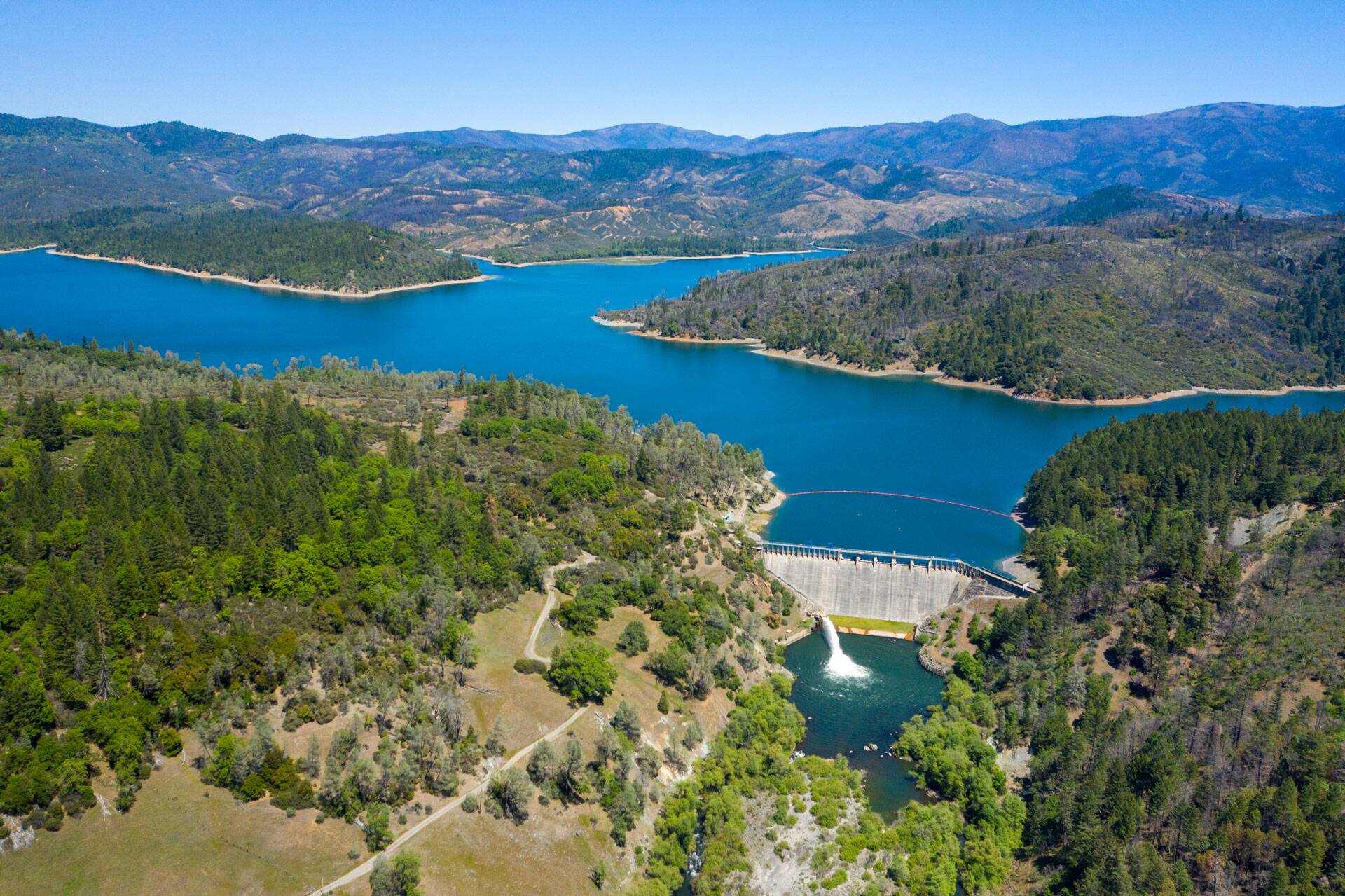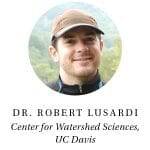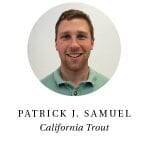THE DAMS
Located on the Eel River, 20 miles northeast of Ukiah, Scott, and Cape Horn dams form Pacific Gas and Electric Company (PG&E)’s Potter Valley Project. Scott Dam is a complete barrier to fish migration. Cape Horn Dam has a poorly functioning fish ladder and diverts Eel River water through a mile-long tunnel to a powerhouse in the east branch of the Russian River. The powerhouse stopped generating electricity in 2021, and PG&E determined that it was less costly for ratepayers to remove the dams than to continue to own and operate the facilities. PG&E is currently working with federal regulators to develop a decommissioning plan for the facilities.

Owner:
Pacific Gas & Electric
Location:
Upper Mainstem Eel River
Completion Date:
Cape Horn Dam in 1907, Scott Dam in 1921
Size:
Cape Horn Dam Height: 63 ft, Length: 515 ft; Scott Dam Height: 138 ft, Length: 850 ft.
Stakeholders:
PG&E, Sonoma Water, Mendocino County Inland Water and Power Commission, Round Valley Indian Tribes, Humboldt County, Wiyot Tribe, CalTrout, Friends of the Eel River, Trout Unlimited, The Nature Conservancy, Russian Riverkeeper, California Hydropower Reform Coalition.
Land Acknowledgment
The Eel River Dams impact the ancestral lands of the Round Valley Indian Tribes, the Wiyot Tribe, and several other tribes in the region.The Problem
Fish populations in the Eel River are severely depressed. Although the Eel River once boasted some of the largest salmon runs in California, the river’s salmon and steelhead populations are all listed as threatened under the Federal Endangered Species Act. Water quality throughout the Eel River is listed as impaired under the Clean Water Act for excessive sedimentation and high temperatures. This poor water quality impacts the region’s Tribes and other water users. The Tribes in the region have also suffered drastically reduced access to their fishery as well as destruction of many cultural practices from the damage caused by the Potter Valley Project to the Eel River ecosystem. The river’s mainstem and estuary are also negatively affected by a lack of floodplain connectivity and habitat loss from agricultural land conversions, the introduction of non-native pikeminnow, and poor water quality. The 63-ft tall Cape Horn Dam has a poorly functioning fish ladder, and 12 miles upstream from Cape Horn Dam, the 130-ft Scott Dam, which creates Lake Pillsbury, has no fish passage, and thus blocks 288 miles of potential salmon and steelhead rearing habitat. Scott Dam is the largest barrier to native salmon habitat on the north coast of California, and it blocks access to high elevation, climate change resilient habitat in Mendocino National Forest and Snow Mountain Wilderness.
Current Situation
The Eel represents perhaps the greatest opportunity in California to restore an entire watershed and abundant populations of wild salmon and steelhead. PG&E has allowed its license for the operation to expire and is currently working with federal regulators to develop a decommissioning plan for the facilities. CalTrout recognizes a unique opportunity to steer the future of the Eel River toward robust fisheries and a healthy watershed by removing both Eel River dams. We also recognize the opportunity to reverse the long-lasting impacts to California Indigenous peoples from a century and a half of habitat degradation and other impacts. Over the past three years, CalTrout, water users including Sonoma Water and Mendocino County Inland Water and Power Commission, Round Valley Indian Tribes, and Humboldt County have worked within the FERC relicensing process to find a proactive, science-driven approach to resolving the fate of this outdated water infrastructure. The Two-Basin Solution Partners worked toward a project developed, in part, by Congressman Jared Huffman’s Ad Hoc Committee – one that would maintain a winter diversion of Eel River water to the Russian River while restoring migratory access to habitat above the dams. However, the Partners were unable to raise the substantial funds needed to begin work on the project and PG&E was unsupportive. It is clear now that the only path forward for a two-basin solution is to work toward a solution in parallel with the license surrender and decommissioning process where PG&E will seek approval from FERC to decommission the project. PG&E will remain liable for the project and all associated costs until FERC declares decommissioning to be complete. In 2023, PG&E announced that the dams are seismically unsound and that they will permanently reduce the amount of water stored behind Scott Dam. This development makes it clear that maintaining the status quo for the Potter Valley Project is no longer an option. CalTrout along with Eel River conservation, tribal, and other NGO partners will continue to work together to ensure that a free-flowing Eel River is the ultimate outcome of the decommissioning process and that dam removal happens expeditiously. We'll also continue to work with water users to help meet their needs in an ecologically appropriate manner.
Potential for Removal
PG&E has stated their intent to remove in water facilities related to the Project and has suggested dam removal could start as soon as 2028. While this is encouraging news, we will be working over the next several years to ensure that dam removal happens quickly and safely and that subsequent restoration work is handled appropriately.
Voice of Eel River Dams

Get Involved, Take Action!
Help Reconnect Salmon and Steelhead: Visit pottervalleyproject.org for more information and to learn more about removing the Eel River Dams. Subscribe to CalTrout's newsletter to stay abreast of Potter Valley Project developments. Support CalTrout's Reconnect Habitat Initiative.





